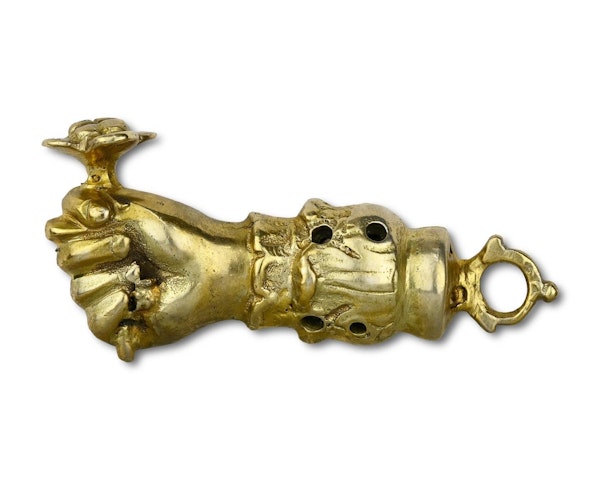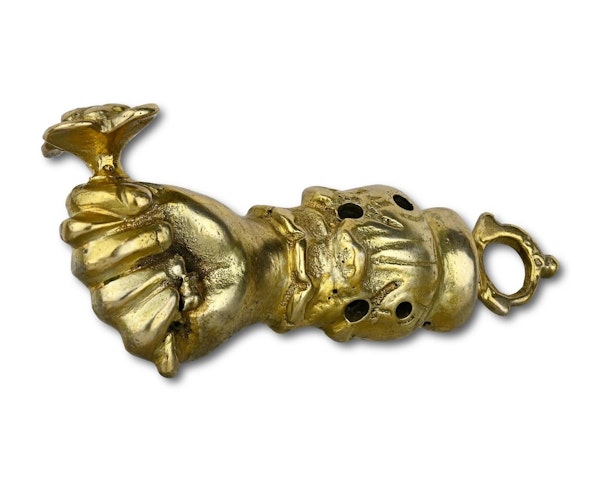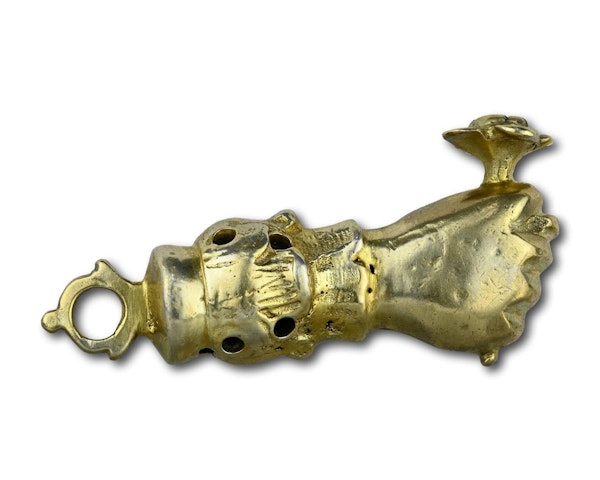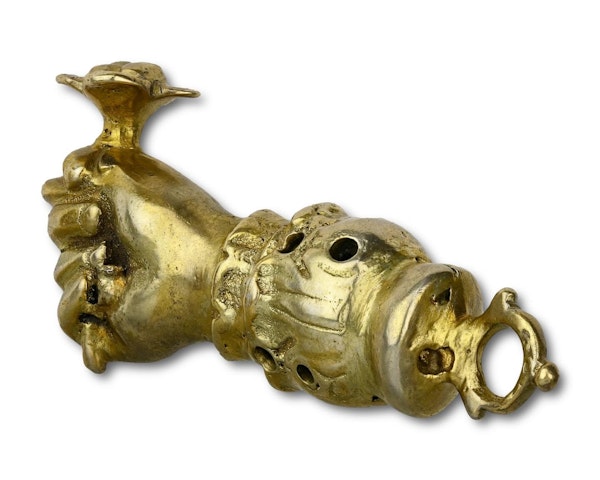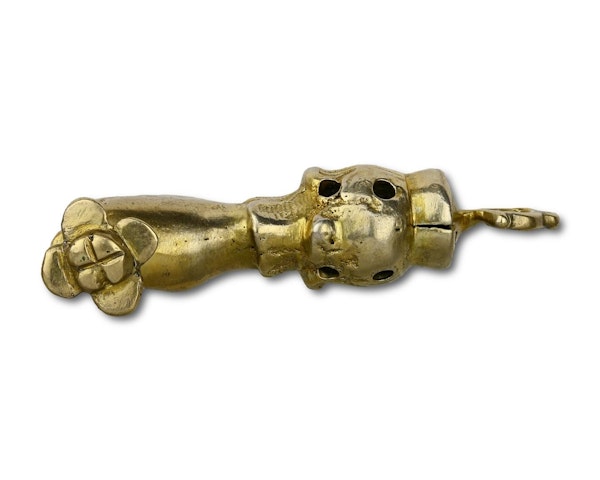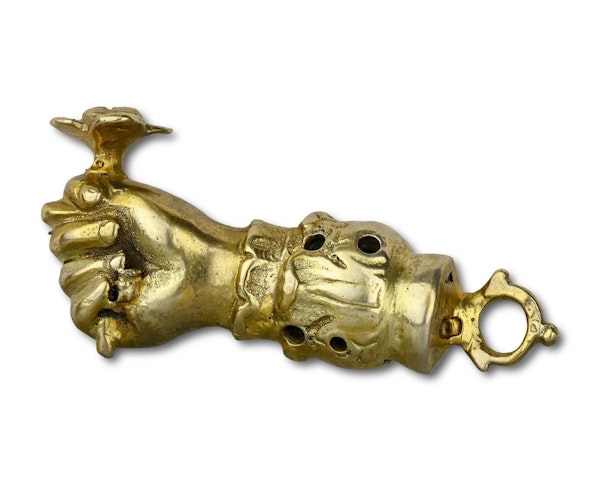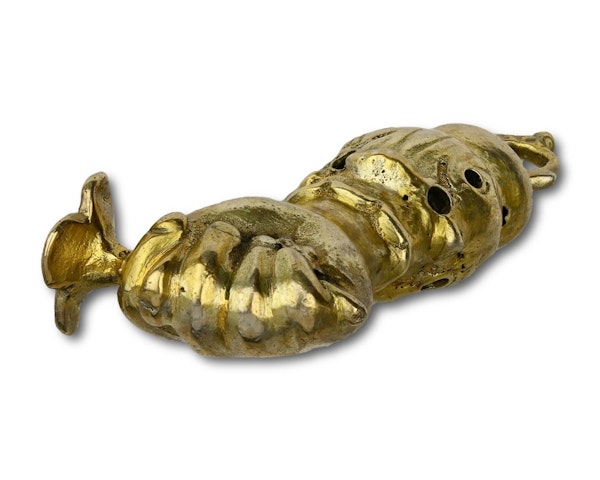Silver gilt pomander pendant in the form of a figa. German, early 17th century.
Silver gilt pomander pendant in the form of a figa. German, early 17th century.
£1,450.00
Description
A silver gilt pomander pendant in the form of a figa.
German, early 17th century.
Measures 6 x 2.8 x 1.4cm.
The outstretched hand is clutching a flower, probably intended as a romantic gesture towards the person it was gifted to. The ruff of the sleeve is pierced and would have contained scented wadding, its vapours releasing through the perforations.
Figa as protective amulets have been used since the ancient world, it was believed to protect from the evil eye and other dark and magical forces and to promote fertility. The figa would have been worn from a belt or from a chatelaine containing other protective talismans.
In a period when plague and disease was rampant, the medical theory was that disease was carried by foul air. A scented pomander was considered an effective measure to protect the user of such illnesses.
| item details |
|---|
Product REF: Silver gilt pomander pendant in the form of a figa. German, early 17th century.
